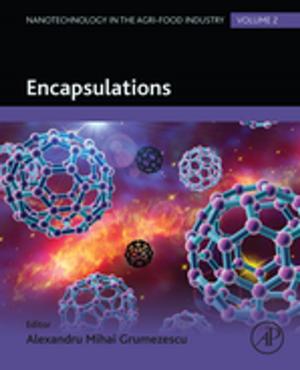Ceramic-Matrix Composites
Microstructure, Properties and Applications
Nonfiction, Science & Nature, Technology, Material Science, Manufacturing| Author: | ISBN: | 9781845691066 | |
| Publisher: | Elsevier Science | Publication: | January 25, 2006 |
| Imprint: | Woodhead Publishing | Language: | English |
| Author: | |
| ISBN: | 9781845691066 |
| Publisher: | Elsevier Science |
| Publication: | January 25, 2006 |
| Imprint: | Woodhead Publishing |
| Language: | English |
The advent of engineering-designed polymer matrix composites in the late 1940s has provided an impetus for the emergence of sophisticated ceramic matrix composites. The development of CMCs is a promising means of achieving lightweight, structural materials combining high temperature strength with improved fracture toughness, damage tolerance and thermal shock resistance. Considerable research effort is being expended in the optimisation of ceramic matrix composite systems, with particular emphasis being placed on the establishment of reliable and cost-effective fabrication procedures.
Ceramic matrix composites consists of a collection of chapters reviewing and describing the latest advances, challenges and future trends in the microstructure and property relationship of five areas of CMCs. Part one focuses on fibre, whisker and particulate-reinforced ceramic matrix composites, part two explores graded and layered ceramics, while the five chapters in part three cover nanostructured CMCs in some detail. Refractory and speciality ceramic composites are looked at in part four, with chapters on magnesia-spinel composite refractory materials, thermal shock of CMCs and superplastic CMCs. Finally, part four is dedicated to non-oxide ceramic composites.
Ceramic matrix composites is a comprehensive evaluation of all aspects of the interdependence of processing, microstructure, properties and performance of each of the five categories of CMC, with chapters from experienced and established researchers. It will be essential for researchers and engineers in the field of ceramics and more widely, in the field of inorganic materials.
- Looks at the latest advances, challenges and future trends
- Compiled by experienced and established researchers in the field
- Essential for researchers and engineers
The advent of engineering-designed polymer matrix composites in the late 1940s has provided an impetus for the emergence of sophisticated ceramic matrix composites. The development of CMCs is a promising means of achieving lightweight, structural materials combining high temperature strength with improved fracture toughness, damage tolerance and thermal shock resistance. Considerable research effort is being expended in the optimisation of ceramic matrix composite systems, with particular emphasis being placed on the establishment of reliable and cost-effective fabrication procedures.
Ceramic matrix composites consists of a collection of chapters reviewing and describing the latest advances, challenges and future trends in the microstructure and property relationship of five areas of CMCs. Part one focuses on fibre, whisker and particulate-reinforced ceramic matrix composites, part two explores graded and layered ceramics, while the five chapters in part three cover nanostructured CMCs in some detail. Refractory and speciality ceramic composites are looked at in part four, with chapters on magnesia-spinel composite refractory materials, thermal shock of CMCs and superplastic CMCs. Finally, part four is dedicated to non-oxide ceramic composites.
Ceramic matrix composites is a comprehensive evaluation of all aspects of the interdependence of processing, microstructure, properties and performance of each of the five categories of CMC, with chapters from experienced and established researchers. It will be essential for researchers and engineers in the field of ceramics and more widely, in the field of inorganic materials.
- Looks at the latest advances, challenges and future trends
- Compiled by experienced and established researchers in the field
- Essential for researchers and engineers















